17+ SAMPLE Affidavit of Personal
-
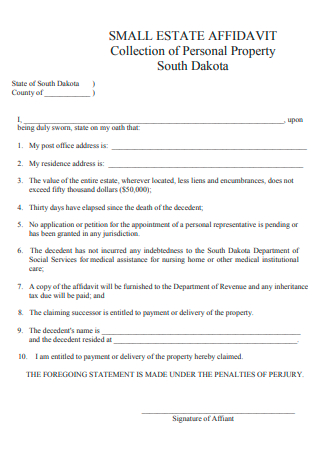
Small Estate Affidavit Collection of Personal Property
download now -

Affidavit of Foreign Personal Representative
download now -
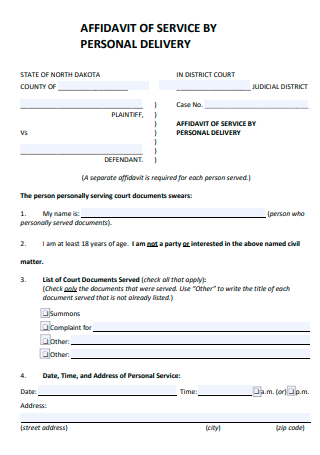
Affidavit of Service By Personal Delivery
download now -

Affidavit of Personal Representative For Release of Medical Information
download now -
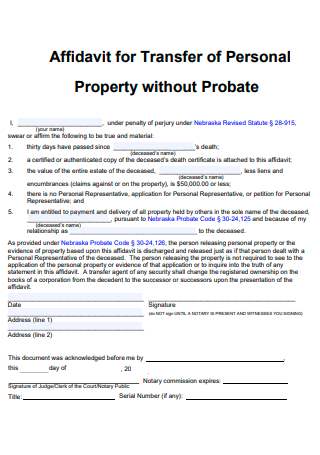
Affidavit For Transfer of Personal Property
download now -
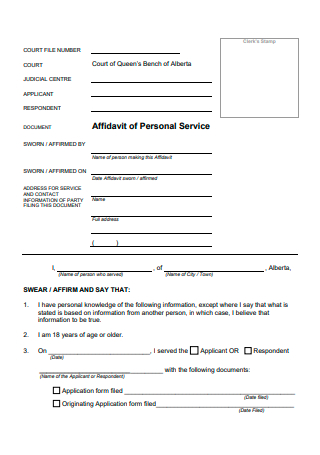
Affidavit of Personal Service
download now -

Affidavit of Fact Concerning Business Personal Property
download now -
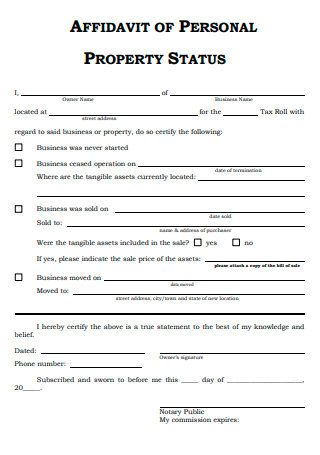
Affidavit of Personal Property Status
download now -

Affidavit of New Business Personal Property
download now -
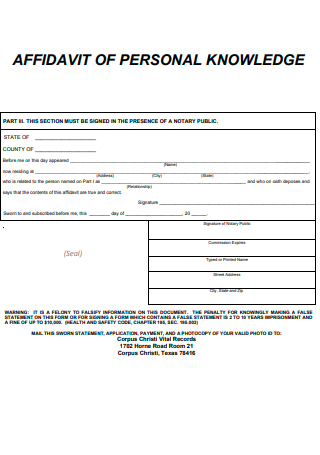
Affidavit of Personal Knowledge
download now -
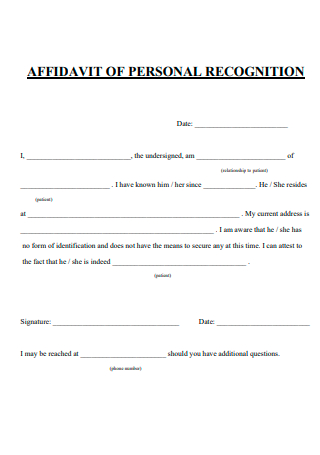
Affidavit of Personal Recognition
download now -
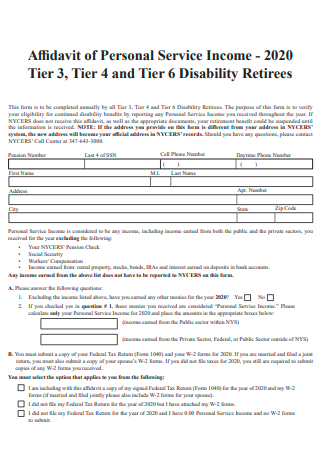
Affidavit of Personal Service Income
download now -
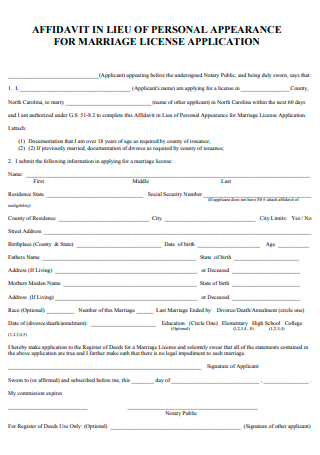
Affidavit in Lieu of Personal
download now -
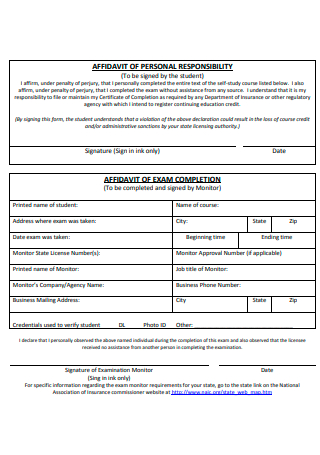
Affidavit of Personal Responsibility
download now -
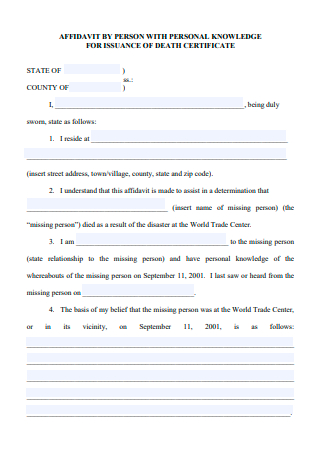
Affidavit of Personal with Personal Knowledge
download now -
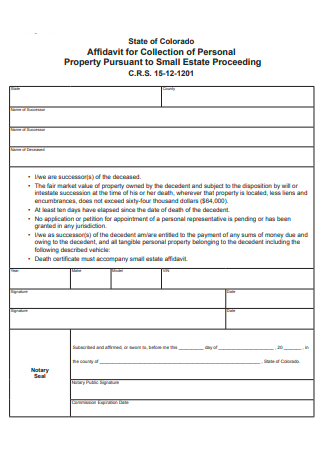
Affidavit For Collection of Personal Property to Small Estate Proceeding
download now -
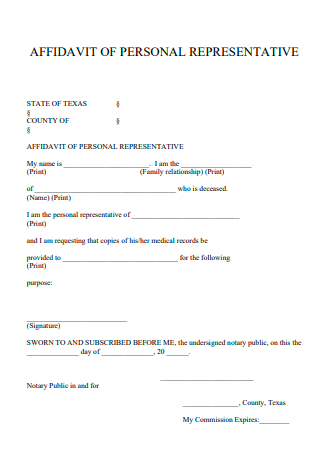
Affidavit of Personal Representative
download now -
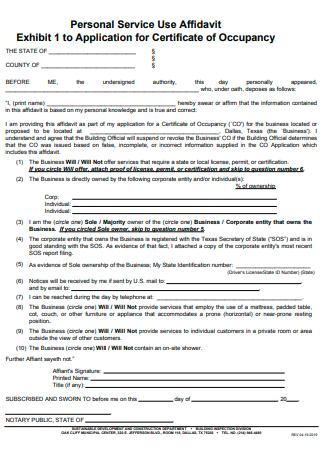
Affidavit of Personal Service Use Template
download now
What Is an Affidavit of Personal?
A personal Affidavit is a legal document in which a person swears to the veracity and accuracy of written facts. The majority of personal affidavits are linked to court cases, notably civil trials, although they can be utilized wherever honesty is necessary. Personal affidavits exist to check the truth, and false assertions included within them can result in court punishments for perjury and other violations. In certain cases, an affidavit of personal representative will depend on the situatior reason why you cannot write one for yourself. Though it may still get notarized which is what is important.
Types of Affidavits
Affidavits have numerous functions, and there are many distinct sorts of these legal papers. Due to the vast amounts of types available, each one performs a disYou must bethat you are aware of what each type is meant to fulfill so that when the time comes, you are prepared on what to write for your specific needs. You can’t use one type and not have it correlate with what situation you are encountering.
How to Write an Affidavit of Personal
There are various approaches to writing an affidavit of personal use. The majority of affidavits are less than one page in duration though it depends if you have additional attachments to your document. Some are more elaborate and may have many pages and sections. This article has curated for you a guide on how to draft an affidavit step by step. Additionally, if you prefer using a personal affidavit template, then it is provided for you as well.
1. Place a Title on Your Affidavit
Begin your Affidavit with a title that describes what it is about. You may, for example, begin with “Affidavit of,” followed by your name. Don’t forget to explicitly state the address of the court. Also include the case title, the names of the defendants and plaintiffs, and the case number if a court case is involved. You must place a label on it otherwise it may be mixed up with other documents.
2. Introduce the Affiant
Following the title and description comes a declaration of the affiant’s identification. Provide your name, age, gender, employment, address, and relationship to the litigant. Include pertinent information such as your date of birth, postal address, current dwelling address, and country of origin or current address. Provide factual Information. Courts consider falsifying any information on an affidavit to be lying under oath. Maintain this crucial fact in mind throughout the legislative drafting process.
3. Provide Oath of Providing Facts
Before you lay out the facts, you must swear that what you are going to say is truthful to the greatest extent of your knowledge. Remember, this is the written equivalent of a courtroom oath. You should add this in writing so that the content you add afterward is not questioned nor would it be doubted. After you have outlined the facts, you can reconfirm your sworn declaration after your affidavit.
4. List Out the Facts
This component of your affidavit should be handwritten or typed in straightforward English, with no frills or personal comments. Simply state the main facts in precise, chronological sequence in using the first person point-of-view (“I”). Try your best to only state information you have remembered to be precise in the recollection of the moment that occurred.
5. Attach Other Relevant Exhibits
If you need to refer to additional documents, number them in your affidavit. Include only relevant elements. Any legal case is built on supporting material. Your attestation should include proof to back up your claims. If you have any doubts about whether the available evidence is admissible, consult with a lawyer. Official reports, financial records, receipts, images and videos, personal journals, and other documents may be included. You can go to the next stage without attaching anything if you are not presenting proof.
6. Sign and Have it Notarized
The last step is where you will need to get the completed affidavit notarized. Some states allow remote notarization, but most require that you get your affidavit notarized in the presence of a notary public or other person having legal power to administer an oath. As for any general affidavit, you will need a witness to recognize the contents of your document and that it is not falsified by any means.
FAQs
What is the difference between an affidavit and a notary?
There are several occasions in life when Legal Letters and documents are required to support one’s claims. When attempting to get legal credentials, an affidavit is frequently required. An affidavit is a document that contains facts and information that you believe to be true and becomes legally binding when signed in the presence of a legal authority such as a notary or an oath commissioner. A notary is a person who has legal credentials and is permitted to operate in legal cases, particularly those that are not controversial and just require them to confirm common people’s claims, serving as a witness and stamping their approbation.
Can an affidavit be withdrawn?
When you sign an affidavit, you are signing a written declaration of facts, which is similar to swearing under oath in court. You may uncover an inaccuracy in the legal document, or you may realize that what you swore to is false. If this occurs, you should take measures to withdraw your affidavit to ensure that you are reflecting the most accurate version of the facts. To establish if you can proceed, you must first consult with your lawyer about any legislation that may apply to your case. If you can cancel your affidavit, you must prepare another document stating your plan to do so. This is often referred to as the affidavit of withdrawal.
How do I give an affidavit?
Following the completion of the statement of Facts, the affiant must swear or sincerely declare that the contents of the affidavit are true and correct. The paper is then signed by both the person who made the affidavit and the person who will administer it. The affidavit must be taken in the presence of the administrator, who must be convinced that the affiant’s signature is authentic. Signing an affidavit containing false or misleading facts might lead to criminal charges. That is why it is critical to thoroughly check the statement to guarantee its accuracy.
When it comes to clarifying before the court the personal circumstances you have encountered in your life, it is best advised to have one written as a professional statement recounting what has occurred. Even if you are personally composing the document, formatting it as an affidavit makes it considerably presentable for a legal matter.
